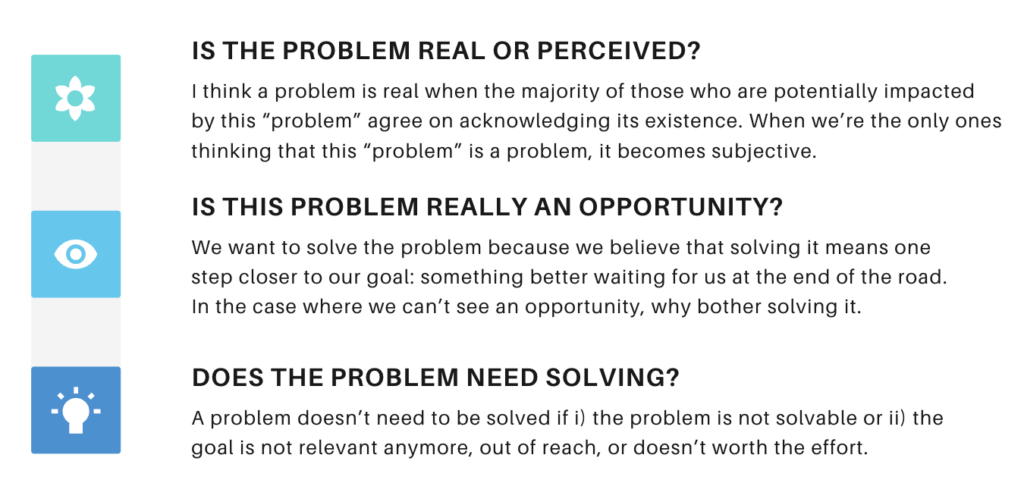In practice, as we discussed previously in “Better Decision-Making with Operations Research”, the process of solving a problem starts from identifying business problems (the most abstract), converting it into a well-known generic OR problem, formulating its mathematical model, to solving this model using some algorithms (the least abstract). This post is dedicated to discuss the first process of OR in practice: identifying business problems.
Oxford Languages’ definition of a problem is “a matter or situation regarded as unwelcome or harmful and needing to be dealt with and overcome”. Problems exist when there are barries in achieving a goal. When we are faced with a problem (that we want to solve), we may want to consider the following questions.


As we discussed in “Better Decision-Making with Operations Research”, OR involves solving problems to improve decision-making. The first two stages in the problem solving process are identifying the problem and structuring the problem. Clients may come to an operations researcher with a bunch of so-called problems – unrefined and less concrete. Thus, the first task of an operations researcher should be to identify and structure the problems posed by the client.
Identifying a Problem
This step may sound obvious but often requires more thought and analysis. I think identifying a problem can be a tricky task. Problem identification involves detecting and recognizing that there is a problem, identifying the nature of the problem, defining the problem. When clients come with their “problems”, an operations research should question: Is there a problem at all? What is the nature of the problem, are there in fact numerous problems? How can the problem be best defined?


Once a problem has been identified, its exact nature needs to be determined. We can do this by examining: what are the goal and barrier components of the problem? Let’s see two examples below.


Viewing the problem in terms of goals and barriers can be an effective way of defining many problems and splitting bigger problems into “easier” sub-problems. For example, in the first problem
“I want to buy a new computer but I’m not sure which model to get or how much money is reasonable to spend”
“I want to buy a new computer” (main problem)
“I’m not sure which model to get” (sub-problem 1)
“I’m not sure how much money is reasonable to spend” (sub-problem 2)
Structuring a Problem
Structuring a problem involves gaining a deeper understanding of the problem. This means asking questions: Is the stated goal the real goal? Are the barriers actual barriers and what other barriers are there? Then, for the first problem, the questions have to be asked are:


This enables us to examine the relationships between goals and barriers, problems and sub-problems. By looking at all the relationships between them, it appears that the problem is more about how to achieve any one of three things, i.e. new computer, knowledge on model or budget. Solving one of these three will, in turn, solve the others.
Once the problem is succesfully identified and structured, an operations researcher will move forward to the second task: converting the problem into a well-known generic OR problem. This is another interesting and important step in the process of solving problems with OR. We’ll discuss this task in the next article. In the meantime, contact us to explore our service related to Operations Research and get further information by sending an email to [email protected].
Reference: https://www.skillsyouneed.com/




